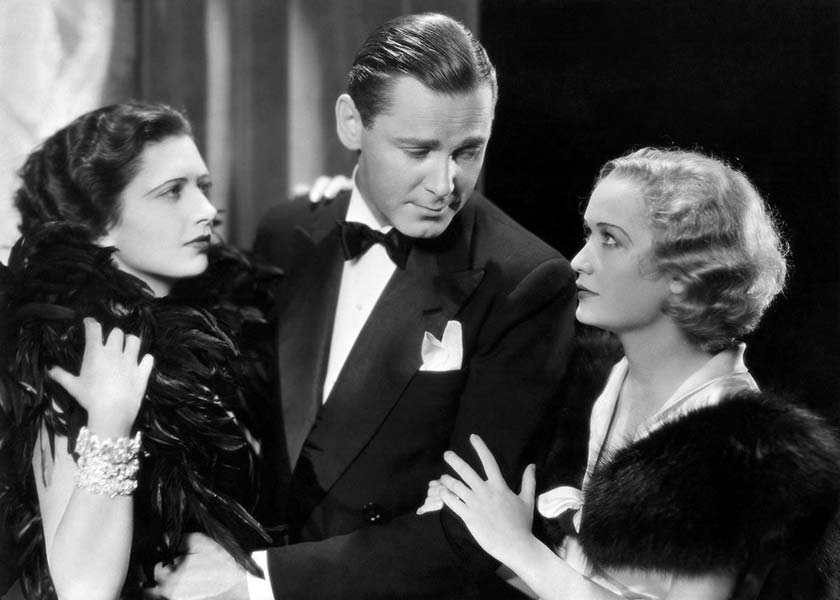Synopsis
Elegant and sophisticated thieves Gaston Monescu (Marshall) and Lily (Hopkins) meet and fall in love among the palaces and canals of Venice. Transferring their activities to Paris, they plan to rob rich businesswoman Madame Mariette Colet (Francis). Gaston becomes her latest private secretary, living in her Art Deco mansion. When Mariette indicates her attraction to him, Gaston is responsive and Lily becomes jealous. Ultimately Gaston has to choose between the two women.
Discussion
Trouble in Paradise
is a witty and subtle love triangle film, filled with sexual
innuendo and the
Lubitsch touch.
Upon meeting Lily, Gaston steals a garter from her leg.
Mariette tells Gaston that the previous private secretary
appreciated the bed with the highly decorated frame —
too much. Background doors, open and closed, provide mute, but
sexually suggestive, statements about foreground interactions
between Gaston and Mariette.
Travis Banton designed superb costumes for Miriam Hopkins and Key Francis. Hopkins' gown in her first scene provides Herbert Marshall plenty of reason to fall for her. Francis looks particularly beautiful not only in her gowns but also with her hair styling and makeup.
TCM Film Festival, 2012
Trouble in Paradise
was featured in the
Built By Design: Architecture in Film and Deco Design
theme at the TCM Classic Film Festival in 2012. Matt Tyrnauer,
writer and editor at
Vanity Fair
, discussed the architectural settings of the film. Venice
contrasts strongly with Paris. The exteriors and the beautiful
hotel room in Venice demonstrate the Paramount version of the
Venetian baroque. The Paris settings display avant-garde
styles. Mariette Colet lives in a sophisticated Art Deco
house. Lubitsch and set decorator Hans Dreier had a visual
style derived from their films in Germany. The Paris scenes
show examples of the German modernism of the Bauhaus. The film
predates built examples of modernism in the US and
demonstrated this style to the American public. For example,
the tall glass tower seen in an establishing shot of
Mariette's factory represents an architectural style that did
not exist in the US at the time. The Paris scenes are an
extraordinary preview of the architectural style of the coming
decades.
Further Reading

